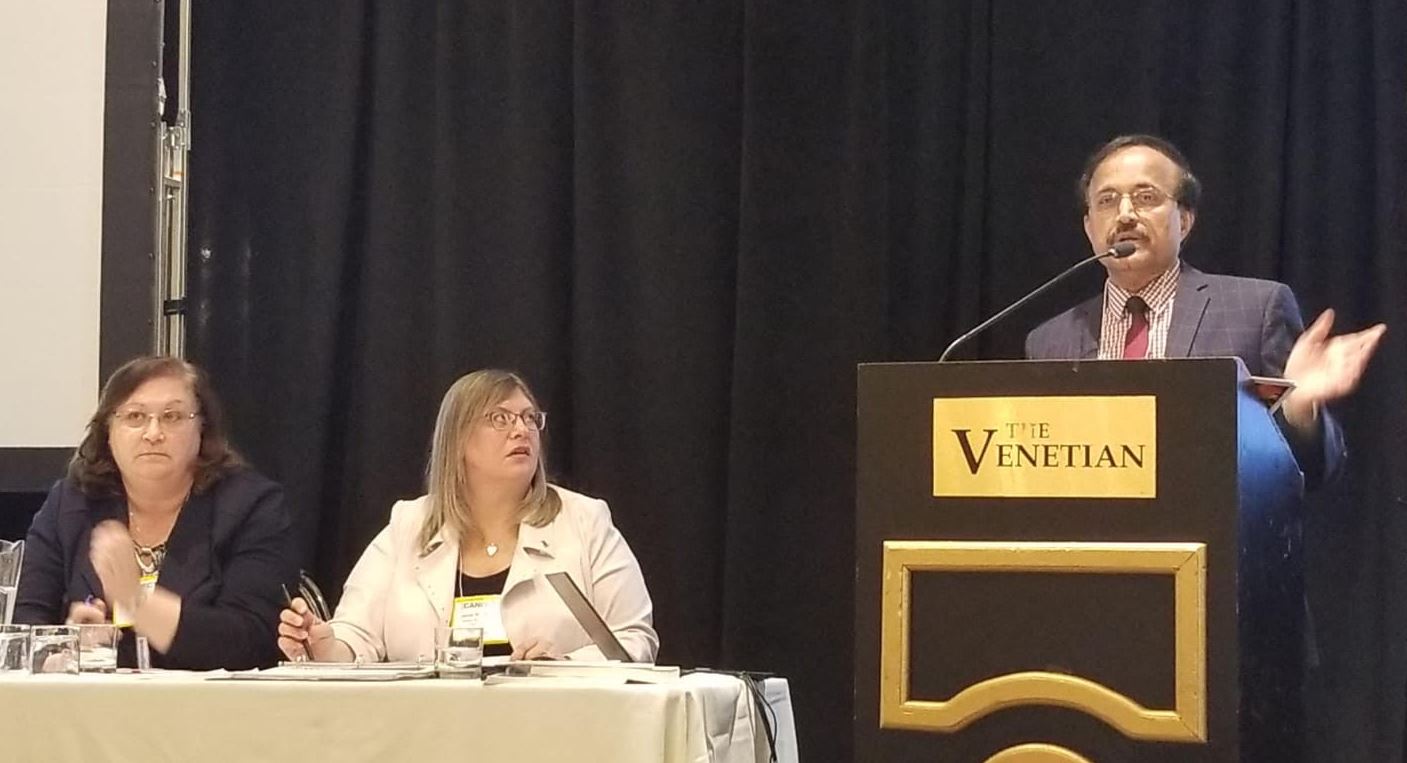
Mark Jasper of GHD made a presentation on Virtual Exercises and the Technology Used. The key points were:
How to run exercises while social distancing and limiting travel during the pandemic.
- The Success of an Exercise in a virtual environment is dependent on: exercise planning; a strong exercise package; trained facilitators; leveraging existing communication technology platforms; and integrating innovative technology for participants.
- To design a Virtual Exercise you need: objectives; a participant list; scenario selection; and a Master Scenario Event List (MSEL) that lays out the exercise play. He used an example of a virtual exercise in Winnipeg indicating that there is a need to interact with government agencies as if there is a real emergency.
- To create a MSEL you need to consider: how you deliver the inject; who receives it; and what do you want them to do.
- The evaluator of the Exercise needs to: observe the completion of objectives; clarify what may have been completed; and coach the participants. The results should not only have negatives, but focus on the positives as well.
There are various Digital Tools available for modelling, augmented reality, virtual reality and live drone feed integration. He showed examples of: graphics on top of air photos, drone images & plant schematics; modelling spills, transport and air dispersion; and camera tracking, photogrammetry and augmented reality.

Kevin Wallace of Spartan Response made a presentation on Decontamination & Disinfection Services
Kevin talked about Spartan’s programs and work plans to disinfect facilities per Covid- 19 recognized best practices, resulting in an efficient process while ensuring the safety of the Spartan staff and respecting client assets. They provide detailed verification that are protecting client’s employees from virus contact. The Standard Pre-Service client engagement includes: a site visit; identifying key client contacts, layout drawings and general operational details. Upon engagement, Spartan would work with the client to identify the specific at-risk areas to disinfect (contacted by suspected carrier).
Spartan summarizes the key information is a responder database, making it readily available to personnel for 7/24 call support. Spartan developed a specific training indoctrination for its employees to ensure best practices are understood and followed with respect to decontamination and PPE requirements. Kevin showed examples of incident reports and certificates are typically posted on Health & Safety billboards.







 Poonam Chodha of Amazon toured the CAER group around the Amazon Fulfillment Centre in Brampton. The Brampton Fulfillment Center is an 80,000 sq. ft. facility on 4 floors which services the Canadian market from Brampton. The operations are made up of inbound and outbound departments. Inbound receives products from hundreds of vendors. Once received, these products become available on the Amazon website to order. Outbound operations, fulfills customer orders by picking, packing and shipping customer orders within specific and tight deadlines. The group toured the facility seeing robots, belt conveyors, packing stations and the shipping of the outgoing goods.
Poonam Chodha of Amazon toured the CAER group around the Amazon Fulfillment Centre in Brampton. The Brampton Fulfillment Center is an 80,000 sq. ft. facility on 4 floors which services the Canadian market from Brampton. The operations are made up of inbound and outbound departments. Inbound receives products from hundreds of vendors. Once received, these products become available on the Amazon website to order. Outbound operations, fulfills customer orders by picking, packing and shipping customer orders within specific and tight deadlines. The group toured the facility seeing robots, belt conveyors, packing stations and the shipping of the outgoing goods.

 Sharon Walker of Vaughan Emergency Planning made a presentation at the CANECT conference on Planning E2 Exercises. The first step is to contact municipality for assistance and participation in exercise. Business must decide when to hold an exercise, weather considerations, time of day and implications to neighbouring industries/businesses. They must choose the types of exercise (notification, case study, table top, simulation cell and field exercise). When planning the exercise you do need to: know your goals and objectives; what you plan to achieve; what are you exercising (part of the plan or the whole plan); and is the training and practice for staff or the evaluation of relevance and effectiveness of the plan. She suggested to create a 5 year schedule to work up to the field exercise. The Exercise Planning Objectives should be simple, measurable, achievable, realistic and time specific. To develop your exercise: create a scenario, determine the scale or size of the incident, the internal and external participants and establish a planning team.
Sharon Walker of Vaughan Emergency Planning made a presentation at the CANECT conference on Planning E2 Exercises. The first step is to contact municipality for assistance and participation in exercise. Business must decide when to hold an exercise, weather considerations, time of day and implications to neighbouring industries/businesses. They must choose the types of exercise (notification, case study, table top, simulation cell and field exercise). When planning the exercise you do need to: know your goals and objectives; what you plan to achieve; what are you exercising (part of the plan or the whole plan); and is the training and practice for staff or the evaluation of relevance and effectiveness of the plan. She suggested to create a 5 year schedule to work up to the field exercise. The Exercise Planning Objectives should be simple, measurable, achievable, realistic and time specific. To develop your exercise: create a scenario, determine the scale or size of the incident, the internal and external participants and establish a planning team.

